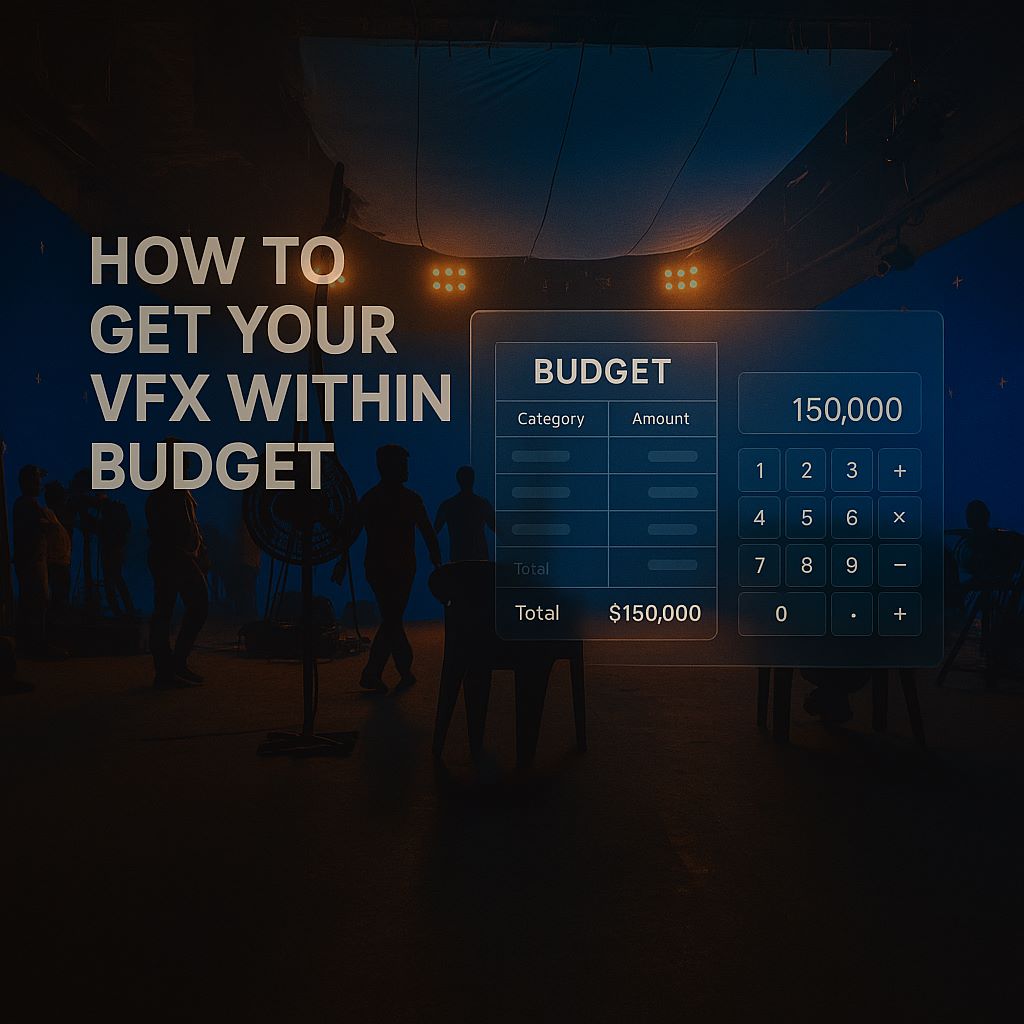——————
Table of Contents
- Introduction
- Understanding Your VFX Needs
- Effective Budget Planning
- Pre-Production and Virtual Art Direction
- Choosing the Right VFX Studio
- Clear Communication and Collaboration
- Efficient Workflow Management
- Leveraging Technology and Innovation
- Monitoring and Adjusting the Budget
- Conclusion
- Author Bio
——————
Introduction
In the dynamic world of Indian cinema, visual effects (VFX) are becoming increasingly important for creating captivating stories. However, managing VFX within Budget remains a challenge as the industry continues to evolve. This guide provides practical steps to ensure your VFX projects stay within budget while maintaining high quality.
Understanding Your VFX Needs
Before diving into effective budget planning, it’s crucial to understand your specific VFX needs. Identify and prioritize the effects required for your project to allocate resources efficiently and avoid unnecessary expenses.
Key Points:
-
-
- Define the scope of your VFX needs.
- Prioritize effects by importance and complexity.
- Brainstorm with your VFX supervisor & Think alternatives for high-cost effects.
-
Effective Budget Planning
Successful VFX management starts with detailed budget planning. In the Indian film industry, where budgets can often be tight, it’s essential to account for all potential costs from pre-production to post-production and set aside contingency funds for unexpected expenses.
Steps:
- Initial Budget Estimation: Calculate the total budget based on the project scope.
- Detailed Breakdown: List all costs, including software, hardware, and labor.
- Contingency Fund: Allocate a portion of the budget for unforeseen expenses.
Pre-Production and Virtual Art Direction
Pre-Production
Pre-production is a critical phase where meticulous planning can save significant costs later. This stage involves developing a clear vision, creating storyboards, and planning the VFX sequences in detail.
Steps:
- Concept Development: Work closely with the director to develop a clear vision.
- Storyboarding: Create detailed storyboards to visualize VFX sequences.
- Planning: Plan the technical aspects of the VFX, including the required shots and techniques.
Virtual Art Direction
Virtual art direction involves using digital tools to design and plan the visual elements of the film. This approach can streamline the production process and ensure consistency across all visual elements.
Steps:
- Digital Design: Use software to create virtual sets, characters, and environments.
- Pre-Visualization (Previs): Create animated previews of scenes to plan shots and effects.
- Integration Planning: Plan how live-action footage and VFX will integrate seamlessly.
Choosing the Right VFX Studio
Selecting the right VFX studio is crucial for staying within budget. In India, where the VFX industry is rapidly growing, it’s important to choose a studio with the right expertise and pricing.
Tips:
- Review portfolios and client testimonials.
- Request detailed quotes and compare prices.
- Assess the studio’s capability to meet your project’s needs.
Clear Communication and Collaboration
Effective communication and collaboration between all stakeholders are vital for budget management. Ensure that everyone involved understands the project’s goals, timelines, and budget constraints.
Best Practices:
- Hold regular meetings to discuss progress and issues.
- Use collaborative tools for project management.
- Maintain transparency about budget status with all team members.
Efficient Workflow Management
Streamlining the VFX workflow can significantly reduce costs. Adopt efficient practices and tools that enhance productivity and minimize delays.
Strategies:
- Implement a structured workflow with clear stages.
- Use project management software to track progress.
- Regularly review and optimize processes to eliminate bottlenecks.
Leveraging Technology and Innovation
Embrace the latest technology and innovative techniques to achieve high-quality VFX within budget. Utilize cost-effective software and tools that provide excellent results.
Technological Tips:
- Use open-source or affordable VFX software.
- Incorporate cloud-based rendering to reduce hardware costs.
- Stay updated on industry trends and tools for efficient VFX production.
Monitoring and Adjusting the Budget
Continuous monitoring of the budget throughout the project is essential. Regularly compare actual expenses with the budgeted amounts and make necessary adjustments.
Steps:
- Regular Reviews: Conduct periodic budget reviews.
- Expense Tracking: Keep detailed records of all expenditures.
- Adjustments: Make timely adjustments to avoid overspending.
Conclusion
Achieving high-quality VFX within budget in the Indian film industry requires meticulous planning, effective communication, and smart resource management.
By understanding
- Your VFX needs,
- planning effectively,
- choosing the right studio,
- and leveraging technology,
you can ensure your projects stay on track financially while delivering stunning visual effects.
——————-


0 Comments